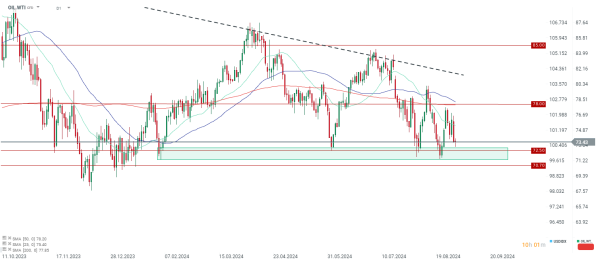China boosts oil imports, but PMIs suggest further economic problems
Greater imports in Asia
Asia's oil imports rebounded in August after a July that saw the lowest imports in two years. China, the world's largest oil importer, increased imports by more than 1 million barrels per day compared to July, which could be an important factor from the perspective of building a further trend in the oil market.
The increase in imports can be partly attributed to seasonality, as importers increase purchases in the third quarter to build up fuel stocks for peak winter demand. However, lower oil prices also played a significant role.
In August, Asian countries imported about 26.74 million barrels of oil per day, an increase of 2.18 million barrels per day compared to July. China alone increased its oil imports in August to 11.02 million barrels per day, up from 9.97 million barrels per day in July. The recent drop in prices most likely favored Chinese purchases. Moreover, it's worth noting that China also imports a lot of oil from Russia and Iran, so the final figures may differ slightly from the official ones. Nevertheless, not bad import data from China coincided with weak PMI index data. PMI manufacturing fell to its lowest level since March for August.
OPEC+ intends to increase production
At the same time, it is worth noting that OPEC+ is still expected to restore production from its voluntary cut from October at 180,000 barrels per day per month, which is expected to be completed next year (for a total of 2.2 million barrels per day). The earlier cuts, in turn, are to be maintained until the end of 2025.
Libya resumes some production
Libya has only partially restored oil production at around 200,000 barrels per day for its own consumption. In view of this, the oil market appears to be under short-term pressure at the moment, but is vulnerable to the return of more supply in the medium term. Despite good news from Asia on demand, it is uncertain whether this is a one-time bounce or the start of a new trend.

The price fell for the first part of the day today, but is now trying to rebound. However, it is worth remembering that today we will not have a US session, which means that volatility in the market may decrease. The oil futures market is only open today until 8:30 p.m. Source: xStation5